Volgograd is an impressive city located on the banks of the Volga River, holding great historical and cultural significance. Formerly known as Stalingrad, it was the site of one of the largest and bloodiest battles of World War II, making it a symbol of heroism and resistance. The city is filled with monuments, museums, and historical structures that bear the traces of the war. Iconic landmarks such as Mamayev Kurgan, The Motherland Calls statue, and the Battle of Stalingrad Panorama offer visitors a profound opportunity to explore Volgograd’s historical past.
However, the places to visit in Volgograd are not limited to war memorials. The city also offers a rich experience with its riverside promenade along the Volga, parks, museums, and cultural sites. The Old Sarepta Museum, Volgograd Planetarium, and the Museum of History and Monuments are significant places that shed light on different periods and cultural heritage of the city. Additionally, with its vast green spaces and waterfront areas, Volgograd provides enjoyable alternatives for those who wish to spend time in nature. For those looking to explore both history and nature, Volgograd is undoubtedly a must-visit city. Here are 19 places to see in Volgograd. Happy reading! 🙂
1. Mamayev Kurgan
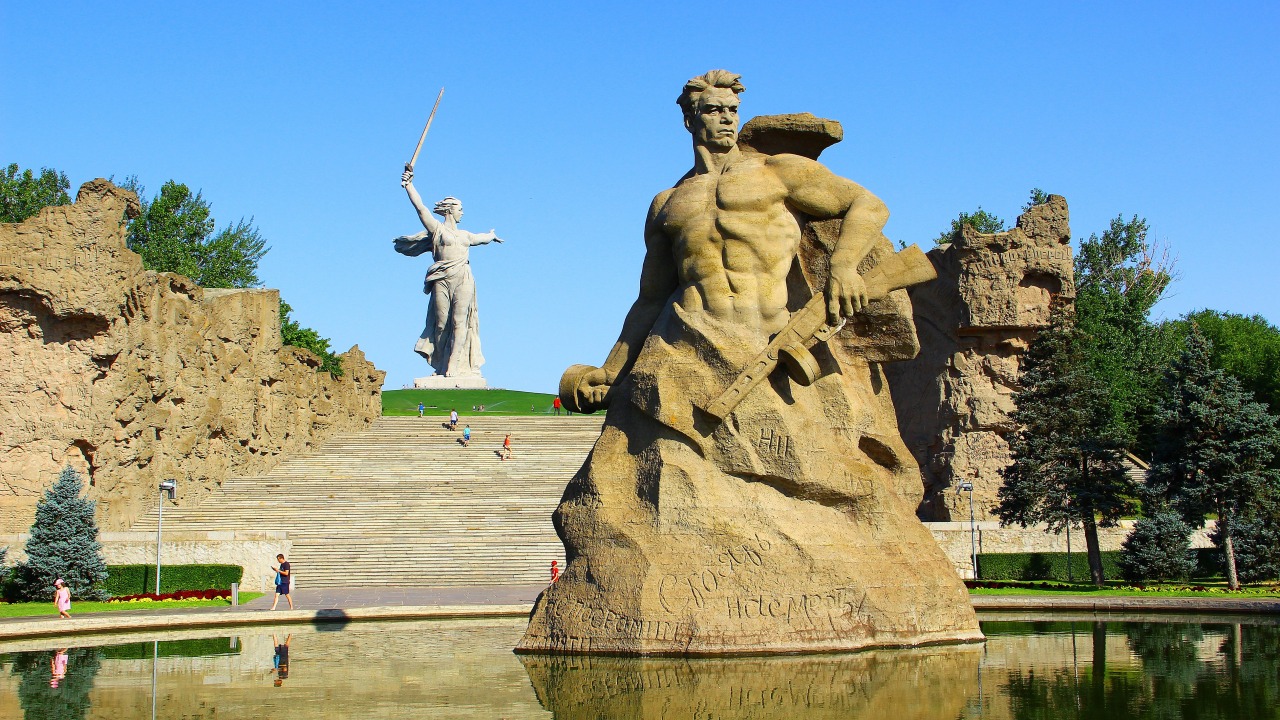
Mamayev Kurgan is one of the most significant historical monuments in Volgograd, known as one of the fiercest battlegrounds of the Battle of Stalingrad during World War II. This strategic hill witnessed intense clashes between German and Soviet forces in 1942-1943, where thousands of soldiers lost their lives. After the war, the site was transformed into a massive memorial complex to honor the heroic Soviet soldiers. The most striking structure in the area is the 85-meter-tall statue “The Motherland Calls!” (Родина-мать зовёт!). This monument is one of the largest statues in the world and symbolizes the Soviet Union’s victory over fascism.
Mamayev Kurgan is not only home to this impressive statue but also features various other memorials, such as Heroes’ Square, the Wall of Immortality, and the Tomb of the Unknown Soldier. Visitors can climb to the top of the monument to enjoy a panoramic view of Volgograd and participate in tributes honoring those who perished in the war. Today, Mamayev Kurgan holds both historical and spiritual significance, making it one of the most essential sites in Volgograd for those who wish to remember the horrors of war and the sacrifices of Soviet soldiers.
2. The Motherland Calls Statue

The Motherland Calls Statue (Родина-мать зовёт!) is a colossal monument located in Volgograd, Russia, and is considered one of the most significant memorials dedicated to the Battle of Stalingrad in World War II. Standing at 85 meters tall and weighing 8,000 tons, it is one of the largest monumental statues in the world. Designed by the renowned sculptor Yevgeny Vuchetich and engineer Nikolai Nikitin, the statue was completed in 1967 as a symbol of the Soviet Union’s victory over Nazi Germany. Depicted with a sword in one hand and the other arm outstretched, calling soldiers to battle, the statue represents a powerful image of patriotism and resistance.
Situated on the Mamayev Kurgan hill, the statue is one of Volgograd’s most iconic landmarks, attracting thousands of visitors each year. Surrounding the monument, visitors can also explore other war memorials such as the Tomb of the Unknown Soldier, Heroes’ Square, and the Wall of Immortality. When illuminated at night, the statue creates a breathtaking scene, visible even from the banks of the Volga River. Recognized as one of the most impressive war memorials in world history, The Motherland Calls serves as a site for commemorative events, honoring the heroes of the past.
3. Battle of Stalingrad Panorama
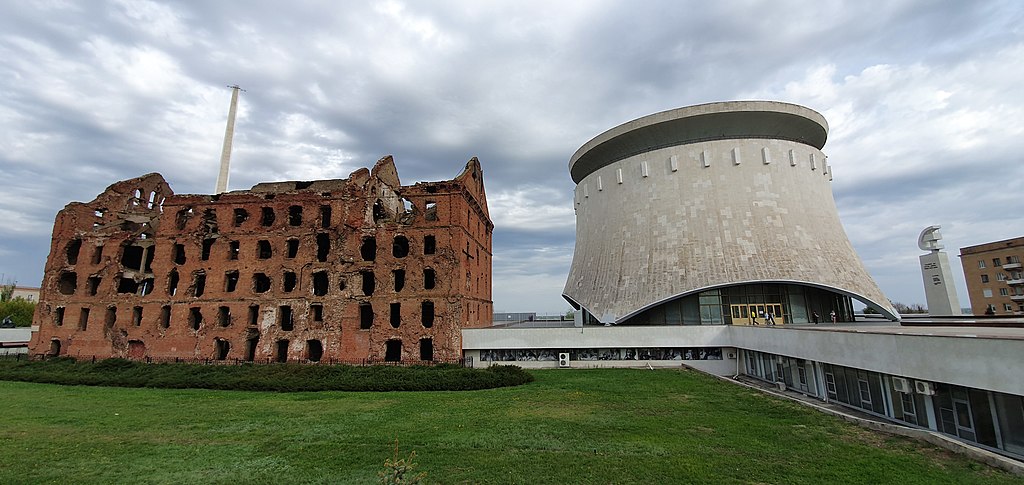
Battle of Stalingrad Panorama (Панорама «Сталинградская битва») is an impressive museum complex in Volgograd that depicts one of the bloodiest and most decisive battles of World War II—the Battle of Stalingrad. The most striking feature of the museum is a massive panoramic painting, measuring 120 meters in length and 16 meters in height. Created by Soviet artist Pavel Bondarenko and his team in 1982, the painting vividly recreates the most crucial moments of the battle. The panorama specifically illustrates the Soviet counteroffensive on November 19, 1942, offering visitors an immersive experience of the battle’s dramatic atmosphere.
The museum complex is not limited to the panoramic painting. It houses an extensive collection of original weapons, battle maps, soldier uniforms, and photographs from the Battle of Stalingrad. Additionally, the site features outdoor exhibits, including the remains of Pavlov’s House, tanks, and aircraft used during the battle. The Battle of Stalingrad Panorama serves as a historical documentary, providing visitors with a deep understanding of the war’s horrors and the heroic efforts of Soviet soldiers. It remains one of the most significant memorial and tourist sites in Volgograd.
4. Stalingrad Battle Memorial Museum
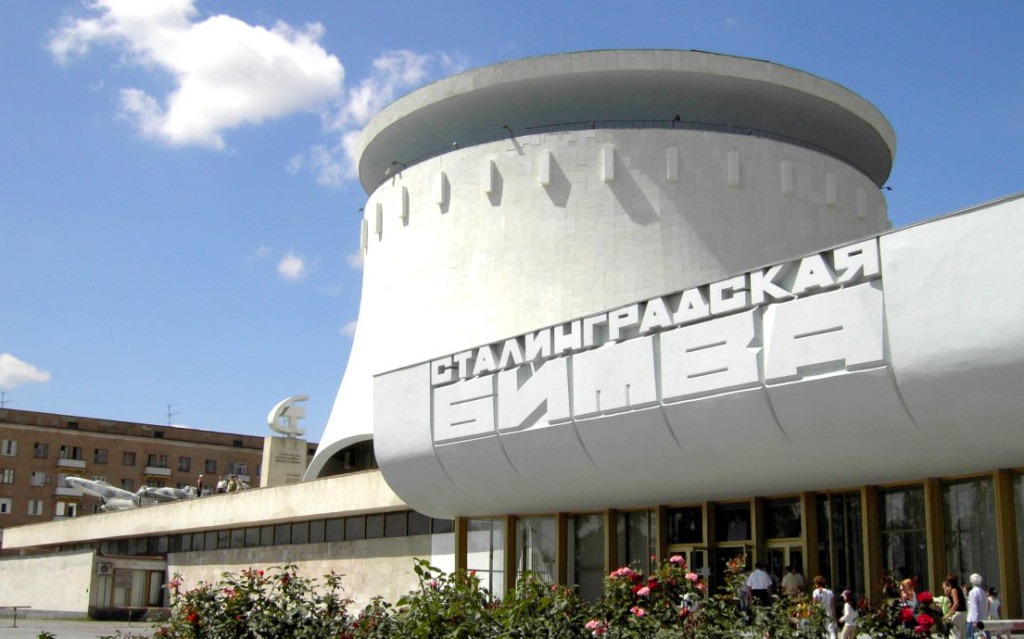
Stalingrad Battle Memorial Museum (Музей-памятник «Сталинградская битва») is a significant museum in Volgograd dedicated to one of the largest and bloodiest battles of World War II—the Battle of Stalingrad. Opened in 1985, the museum features an extensive collection that provides a detailed account of the war. Exhibits include weapons used during the battle, military documents, battle maps, personal belongings of veterans, and historical photographs. Additionally, large-scale artifacts such as tanks, aircraft, and artillery batteries recovered from the battlefield are also on display.
One of the most striking sections of the museum is the Gergardt Mill, a building that was heavily bombarded during the Battle of Stalingrad and has been preserved in ruins to serve as a stark reminder of the war’s devastation. Another significant part of the museum complex is Pavlov’s House, a strategically important building heroically defended by Soviet soldiers during the battle. The Stalingrad Battle Memorial Museum offers visitors a profound insight into the history of the war, making it one of the most important historical sites in Volgograd.
5. Pavlov’s House
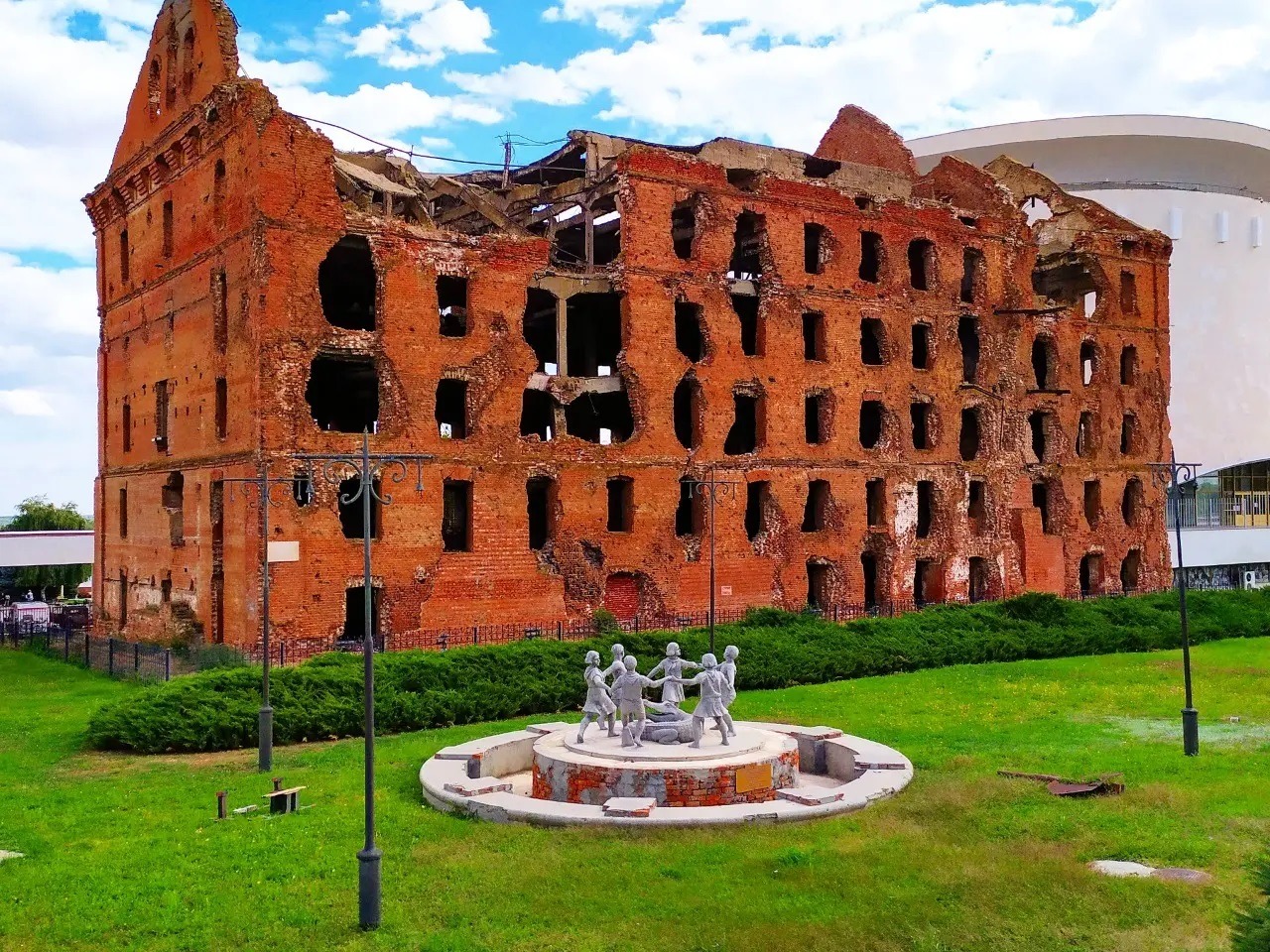
Pavlov’s House (Дом Павлова) became one of the most symbolic defensive strongholds during the Battle of Stalingrad in World War II. In 1942, as Nazi Germany attempted to capture Stalingrad, Soviet soldiers seized this four-story apartment building and transformed it into a strategic defensive position. Under the leadership of Sergeant Yakov Pavlov, a small Soviet unit heroically defended the building for 58 days, resisting relentless German attacks. Despite heavy bombardment and constant assaults, the defenders fortified the building with machine gun nests, barbed wire, and mines, turning it into an impenetrable fortress.
After the war, Pavlov’s House became a powerful symbol of Soviet resistance and bravery, recognized as one of the most important historical landmarks in Volgograd. Today, a portion of the building has been preserved in its original state, allowing visitors to witness its wartime scars. A plaque on the wall reads: “A monument to those who fought.” The surrounding museum and memorials emphasize the significance of the Battle of Stalingrad and the sacrifices of Soviet soldiers. More than just a building, Pavlov’s House remains a lasting emblem of resistance and determination throughout history.
6. Gergardt Mill
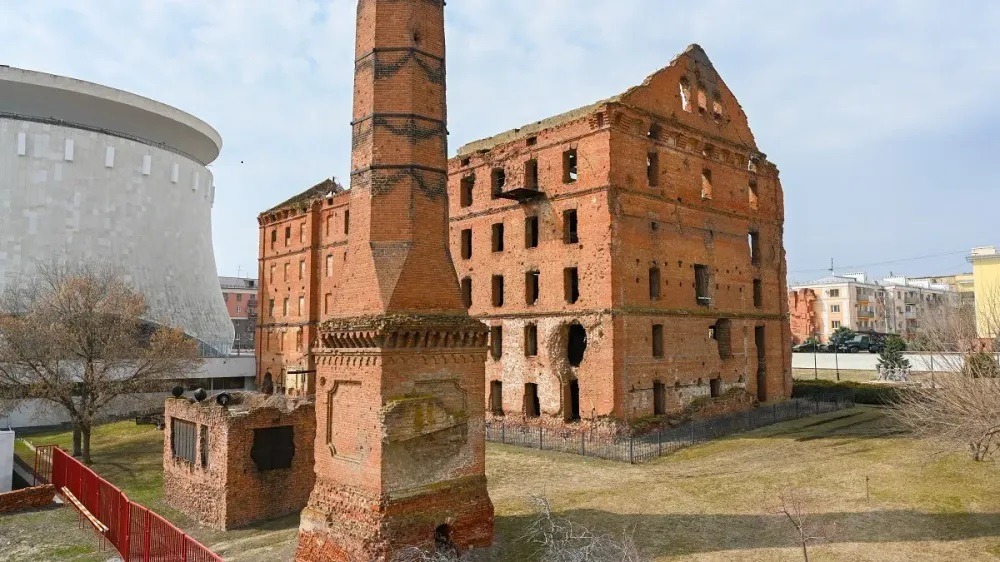
Gergardt Mill (Мельница Гергардта) is a historic structure in Volgograd and one of the most striking symbols of the Battle of Stalingrad. Built in 1903, this large brick building became the site of intense clashes between Nazi German and Soviet forces during the battle. From 1942 to 1943, it endured relentless bombardment, transforming into a ruin that vividly illustrates the devastating impact of war. After the war, Soviet authorities deliberately left the building unrestored, preserving its destroyed state as a war memorial.
Today, Gergardt Mill is part of the Stalingrad Battle Memorial Museum and remains open to visitors. Still covered in bullet holes and artillery damage, the structure stands as a powerful reminder of the horrors of war and the resilience of the Soviet people. Nearby monuments and informational panels provide insight into the strategic importance of the Battle of Stalingrad and the tragedies that unfolded in the city. Gergardt Mill is a must-visit site in Volgograd, serving as a living witness to history.
7. Volgograd Museum of History and Memorials
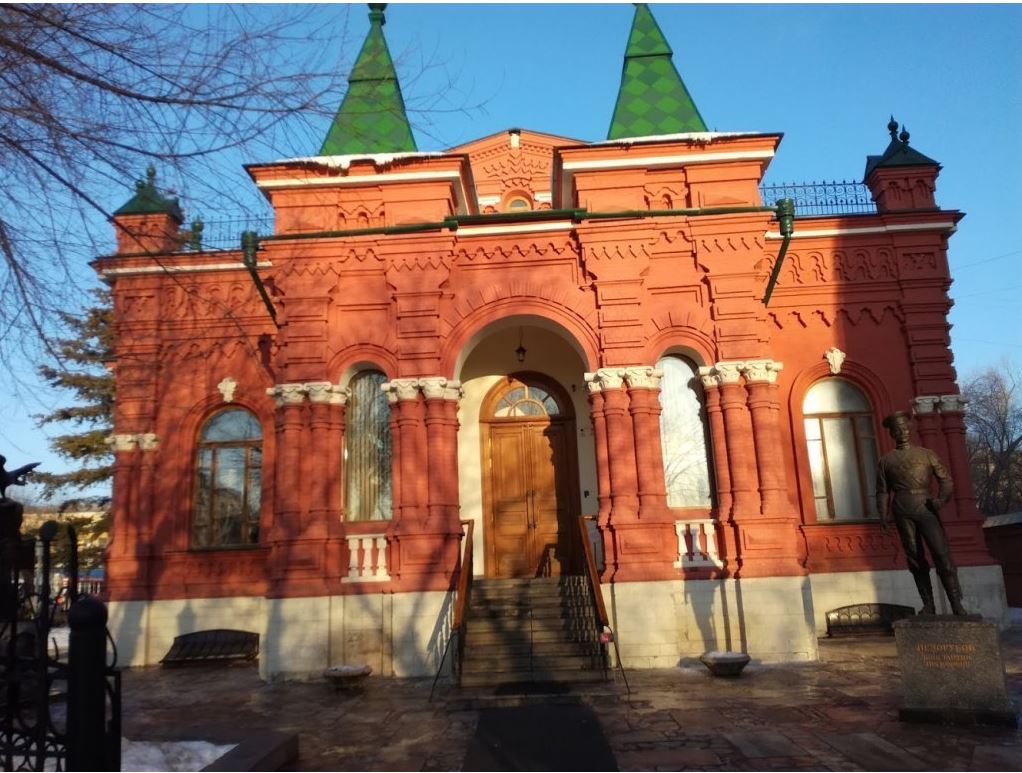
Volgograd Museum of History and Memorials (Волгоградский мемориально-исторический музей) is an important cultural center for those who wish to explore the rich past of the city. Founded in 1914, the museum houses an extensive collection that traces the development of Volgograd (formerly Stalingrad) from prehistoric times to the present. Its exhibitions cover a wide range of historical periods, from archaeological artifacts of ancient civilizations to documents and photographs from Tsarist Russia, as well as exhibits on the Soviet Union’s industrial progress and the Battle of Stalingrad. The museum itself is a historical building, distinguished by its classical architectural style.
One of the museum’s most significant sections is dedicated to World War II and the Battle of Stalingrad. Visitors can explore military equipment, medals, personal belongings of veterans, and war maps from that era. In addition, the museum provides detailed information on Volgograd’s post-war reconstruction, industrial development, and cultural heritage. The Volgograd Museum of History and Memorials is a must-visit destination for history enthusiasts and those interested in learning more about the city’s past.
8. Old Sarepta Museum and Reserve
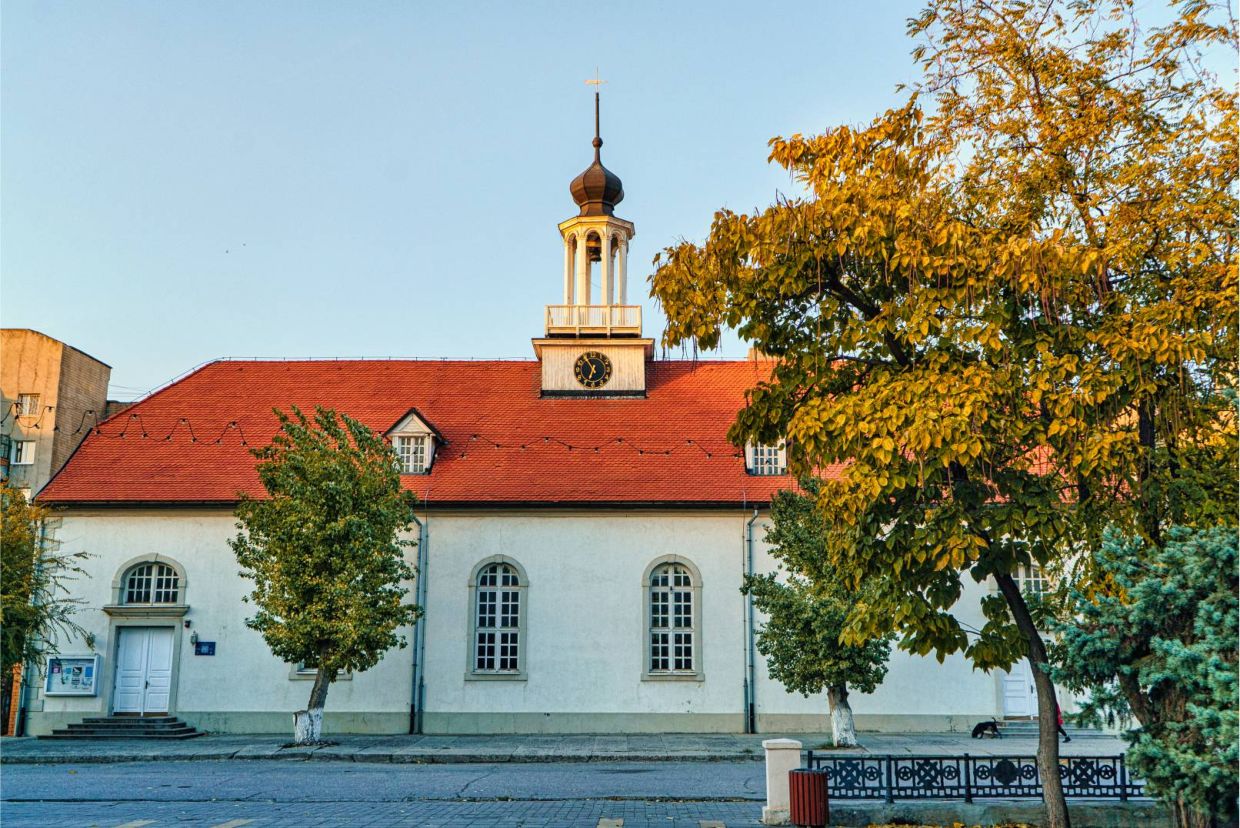
Old Sarepta Museum and Reserve (Музей-заповедник «Старая Сарепта») is one of the most fascinating and historically significant sites in Volgograd. Founded in 1765 by German Herrnhuters (Moravian Brothers), Sarepta is recognized as one of the oldest German colonies in Russia. Over time, this settlement became a center for science, trade, and culture, making remarkable progress in mustard production, ceramic art, and winemaking. Today, this area is one of the best-preserved German settlements in Russia and has been transformed into an open-air museum, allowing visitors to explore the lifestyle of the era.
The museum complex features 18th-century stone buildings, historic churches, residential areas, and traditional workshops. Visitors can engage in interactive exhibits showcasing the daily life, culinary traditions, and crafts of German settlers. Additionally, the museum offers insights into the production of Sarepta mustard, one of the most famous local products, with tasting opportunities for visitors. Blending history, culture, and gastronomy, the Old Sarepta Museum and Reserve is a must-visit destination for those seeking a unique and unforgettable experience in Volgograd.
9. Square of the Fallen Fighters

Square of the Fallen Fighters (Площадь Павших Борцов) is one of the most significant historical and commemorative sites in Volgograd, dedicated to honoring the heroes of the city and the Soviet soldiers who lost their lives during World War II. This square witnessed intense battles during the Battle of Stalingrad, where thousands of soldiers bravely fought and perished. Today, the square is home to monuments dedicated to the defenders of Stalingrad, the Eternal Flame (Вечный огонь), and various sculptures that serve as lasting reminders of the city’s heroic past.
Located in the heart of Volgograd, the square serves as an important gathering place for both locals and tourists. Official ceremonies, memorial events, and Victory Day celebrations are held here, keeping the historical significance of the site alive. Additionally, the surrounding historical buildings, cultural centers, and monuments provide visitors with a comprehensive insight into Volgograd’s past. More than just a memorial site, Square of the Fallen Fighters is an essential destination for those wishing to witness Russia’s heroic history and the enduring spirit of Stalingrad.
10. Avenue of Heroes
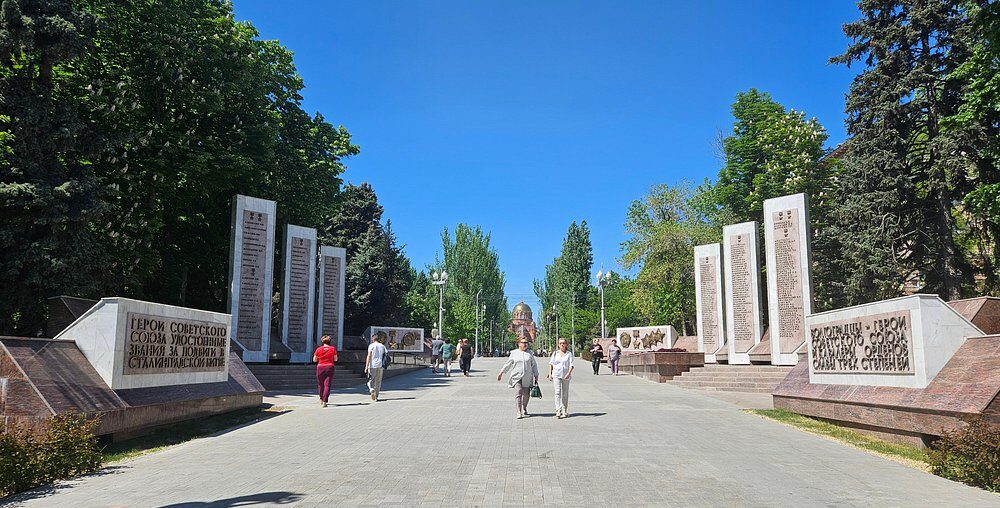
Avenue of Heroes (Аллея Героев) is one of Volgograd’s most significant commemorative walkways, built to honor the Soviet soldiers who displayed extraordinary bravery during the Battle of Stalingrad. This historic path stretches from the banks of the Volga River to Square of the Fallen Fighters, featuring memorial plaques engraved with the names of the heroes who made great sacrifices during the battle. Lined with trees, flower gardens, and statues dedicated to Soviet soldiers, the avenue reflects the courage of the Red Army and the unforgettable spirit of Stalingrad’s defense, offering visitors a deeply immersive historical experience.
Today, Avenue of Heroes serves not only as a memorial but also as one of Volgograd’s most popular promenades. At the end of the walkway stands the Eternal Flame Monument (Вечный огонь), where ceremonies are regularly held in memory of the fallen Soviet soldiers. For both locals and tourists, the avenue is a symbolic journey through history, preserving the legacy of the Battle of Stalingrad. Avenue of Heroes is a must-visit location in Volgograd, providing a unique opportunity to honor the past while exploring the city’s historical essence.
11. Volgograd Planetarium
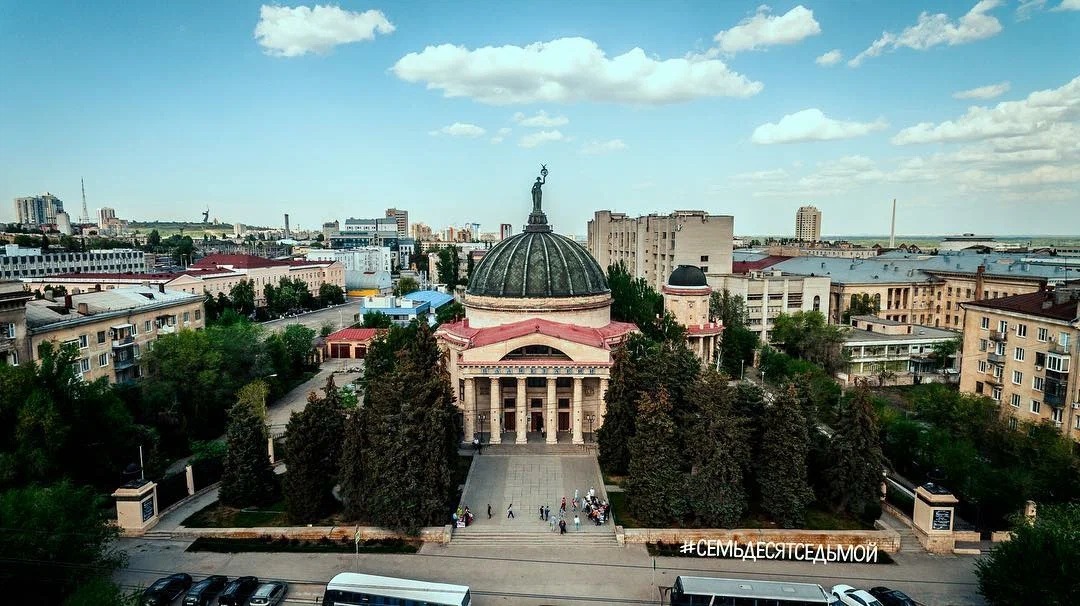
Volgograd Planetarium (Волгоградский планетарий) is one of the city’s most important centers for science and education, built in 1954 during the Soviet era. Designed by renowned architect Vasily Simbirtsev, the planetarium was created to promote Soviet scientific achievements and space exploration. Its grand building, designed in Stalinist architectural style, features an impressive dome and decorative sculptures. Inside, advanced projection systems and interactive exhibits offer visitors the chance to explore the depths of space.
Today, Volgograd Planetarium serves as a hub for astronomy, space research, and planetary sciences. It hosts modern telescope observations, star shows, and multimedia presentations about space exploration, attracting great interest from visitors. The planetarium also houses exhibits dedicated to the Soviet space program, with special sections honoring Yuri Gagarin and other famous Soviet cosmonauts. For space and science enthusiasts, Volgograd Planetarium is an unmissable destination.
12. Volgograd Central Embankment
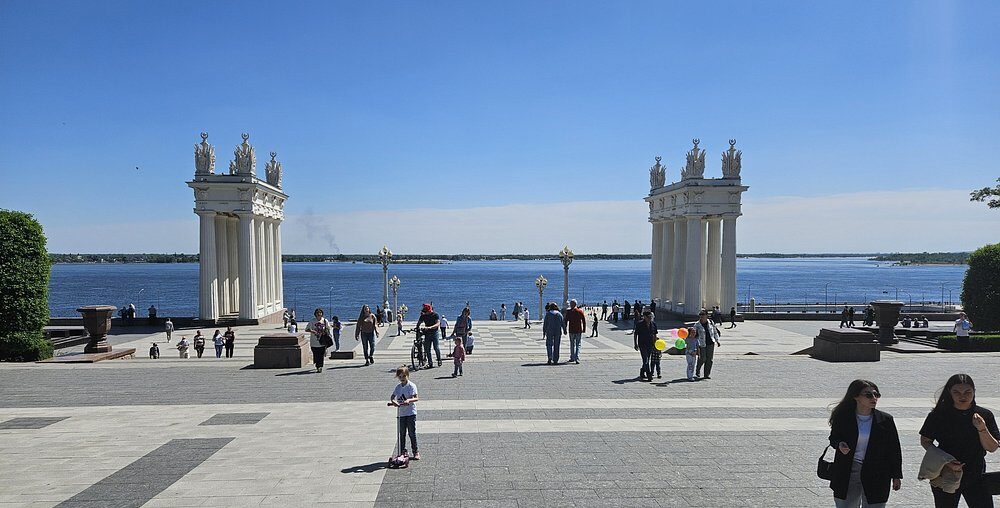
Volgograd Central Embankment (Центральная набережная Волгограда) stretches along the banks of the Volga River and is known as one of the most beautiful and vibrant areas of the city. Featuring wide walking paths, parks, historical monuments, and breathtaking views, it is a popular spot for both locals and tourists. The embankment is lined with statues, fountains, and buildings constructed in classic Soviet architectural style, making it a site of both historical and cultural significance. Its proximity to Victory Park and Avenue of Heroes also makes it an excellent destination for those interested in exploring Volgograd’s wartime history.
Today, the Volgograd Central Embankment is not only admired for its historical ambiance but also for hosting festivals, concerts, and outdoor events. The cafés and restaurants along the riverbank provide visitors with a perfect opportunity to relax while enjoying the serene views of the Volga. In the evening, the illuminated bridges and reflections on the river create a romantic atmosphere, making it an ideal spot for an evening stroll. For those looking to experience Volgograd’s natural beauty and rich history in one place, the Central Embankment is a must-visit location.
13. Volgograd Bridge
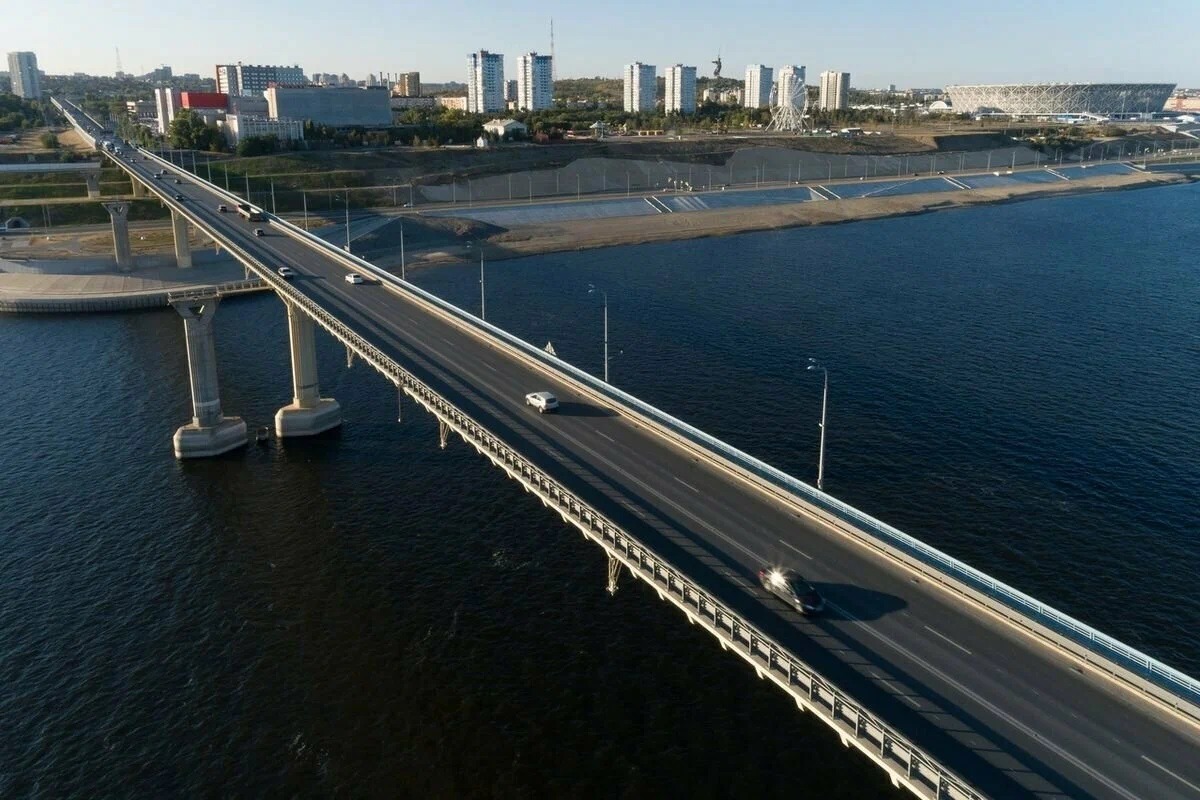
Volgograd Bridge (Волгоградский мост) is one of the most significant engineering structures in the city, spanning the Volga River and connecting both sides of Volgograd. Opened in 2009, the bridge stretches 7.1 kilometers, making it one of the largest bridges over the Volga. Besides facilitating local transportation, it serves as a key transit route linking Moscow, Astrakhan, and other major cities. Built using modern engineering techniques, the bridge not only improves connectivity but also provides a stunning view of the Volga River, making it a point of interest for both locals and tourists.
Shortly after its opening, the Volgograd Bridge gained worldwide attention in 2010 when it began to oscillate due to strong winds and natural resonance effects. This unusual movement led to an extensive engineering investigation, and technical reinforcements were later applied to enhance the bridge’s stability and safety. Today, it remains one of Volgograd’s most vital transport links, adding a modern touch to the city’s skyline while offering visitors a fantastic viewing point over the Volga River.
14. All Saints Church

All Saints Church (Храм Всех Святых) is one of Volgograd’s most significant religious landmarks, built in memory of those who lost their lives during World War II. As one of the most impressive Orthodox churches in the city, it stands out with its white walls, golden domes, and elegant architecture. Designed in accordance with traditional Russian Orthodox architecture, the church serves as a sacred place of worship for those seeking spiritual peace. Since it was constructed to commemorate the soldiers who perished in the Battle of Stalingrad, it holds great historical and symbolic significance in the city.
All Saints Church is frequently visited by both locals and tourists, offering an interior adorned with carefully crafted icons, frescoes, and a mystical atmosphere illuminated by candlelight. The church’s garden features monuments dedicated to war veterans and fallen soldiers, further reinforcing its commemorative role. With its peaceful and solemn ambiance, this sacred site is a must-visit for those who wish to experience Volgograd’s historical and spiritual essence.
15. Volzhskaya Hydroelectric Power Station

Volzhskaya Hydroelectric Power Station (Волжская ГЭС) is a massive energy production complex located on the Volga River and is one of Russia’s largest hydroelectric power plants. Built during the Soviet era in 1958, the station plays a crucial role in meeting the country’s energy demands. Spanning 254.1 meters in length and 44 meters in height, it is considered one of Volgograd’s greatest engineering achievements. With an installed capacity of 2,571 MW, the plant generates approximately 11 billion kWh of electricity annually, supplying a significant portion of the region’s industrial and residential energy needs.
Beyond energy production, the power station also serves important functions such as regulating the Volga River’s water levels, preventing floods, and improving transportation. The construction of the station led to the creation of the Volgograd Reservoir, which has significantly influenced the local ecosystem and water navigation. Today, Volzhskaya Hydroelectric Power Station remains not only a remarkable engineering marvel but also an intriguing site for visitors. Its massive dam, panoramic views of the Volga River, and surrounding natural beauty make it a location worth exploring both technically and as a tourist attraction.
16. Komsomol Garden
Komsomol Garden (Комсомольский сад) is one of Volgograd’s oldest parks, known for its historical significance and natural beauty. Established in the 1950s, the park was named after the Komsomol, the Soviet youth organization, and remains one of the city’s most popular green spaces. With well-maintained walking paths, shady trees, and vibrant flower gardens, it offers a peaceful atmosphere for relaxation. The park also features benches, children’s play areas, and various monuments, making it an ideal place for visitors to enjoy nature and unwind.
One of the park’s most notable landmarks is the Komsomol Monument, which symbolizes the diligence and dedication of Soviet youth. Additionally, its proximity to the Volgograd Drama Theater and other cultural institutions makes it a perfect destination for both nature lovers and art enthusiasts. Conveniently located in the city center, Komsomol Garden is easily accessible and hosts festivals, open-air concerts, and cultural events, particularly during spring and summer. For those looking to experience Volgograd’s historical and natural charm, Komsomol Garden is a must-visit destination.
17. Victory Park
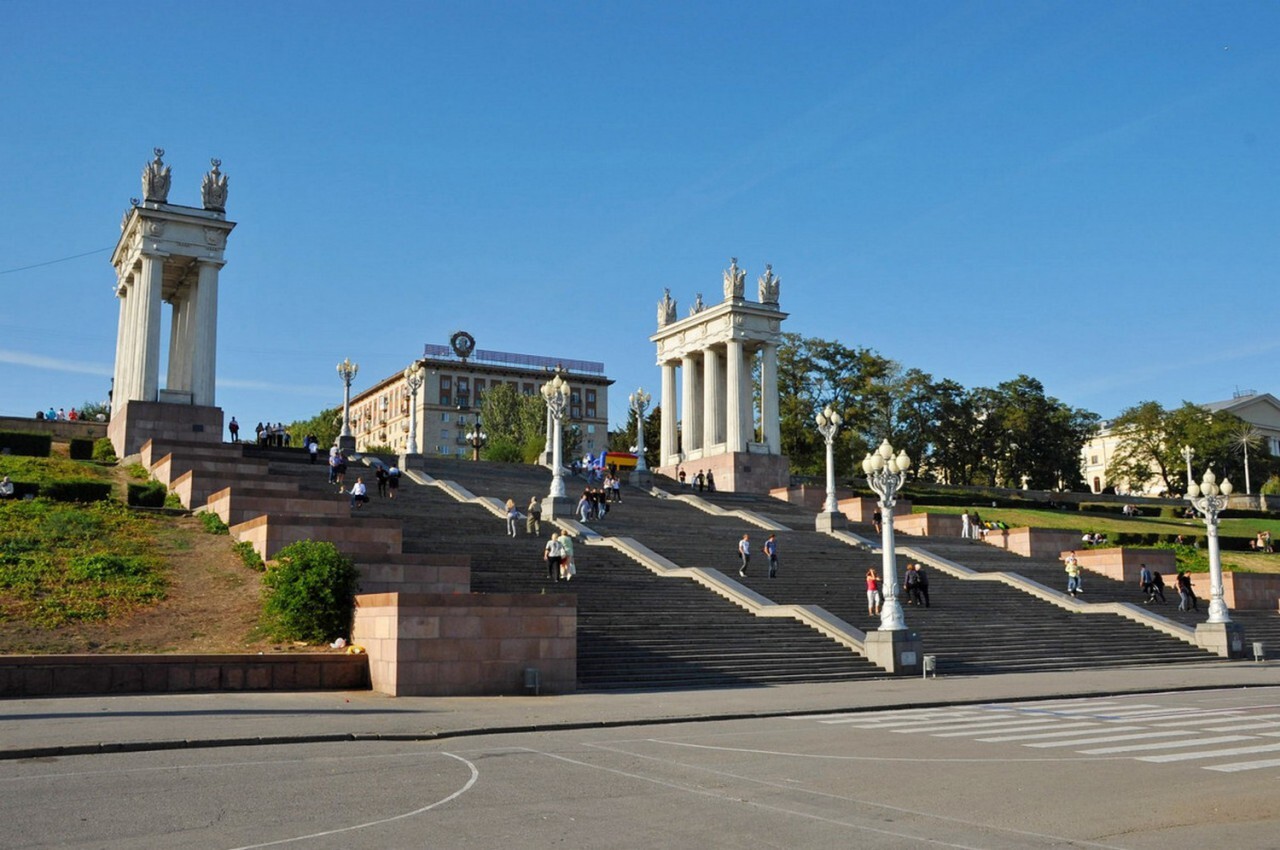
Victory Park (Парк Победы) is one of Volgograd’s most significant memorial sites, dedicated to honoring the Soviet soldiers who lost their lives during the Battle of Stalingrad in World War II. Located in the city center, near Mamayev Kurgan, the park stands out with its monuments reflecting the war’s impact and its impressive landscape design. One of its main attractions is an open-air museum, where visitors can see tanks, artillery batteries, and warplanes that played a crucial role in the battle. This collection serves as a powerful tribute to the heroism of the Soviet Army.
Beyond being a historical memorial, Victory Park is also a place for reflection and relaxation for both locals and visitors. It features walking paths, green spaces, and the Eternal Flame Monument (Вечный огонь), a site of deep significance. The park is also home to Victory Day celebrations on May 9, which continue to honor the legacy of the war and its heroes. For anyone seeking to understand Volgograd’s wartime history and the Soviet Union’s sacrifices, Victory Park is an essential place to visit.
18. Children’s Railway

Children’s Railway (Детская железная дорога) is one of the most unique and educational attractions in Volgograd, designed to teach children about railway operations. This tradition, which began during the Soviet era, was established to familiarize young people with rail transport and provide them with hands-on experience. The Volgograd Children’s Railway operates on a short track spanning a few kilometers, featuring a real train station, rail system, and small-scale locomotives. Here, children take on various responsibilities, including train operation, ticket control, and rail management, allowing them to learn the fundamentals of railway systems in a practical and engaging way.
Beyond its educational purpose, the Children’s Railway is a popular attraction for families and children, offering a fun and memorable train ride through scenic surroundings. The short yet entertaining journey provides a nostalgic experience for both kids and adults. Additionally, the railway hosts special events and educational programs, sparking young people’s interest in engineering and logistics and potentially influencing their future career choices. The Children’s Railway is a must-visit destination in Volgograd, offering an interactive and enjoyable experience for families looking to spend quality time together.
19. Cossack Culture Ethnographic Museum
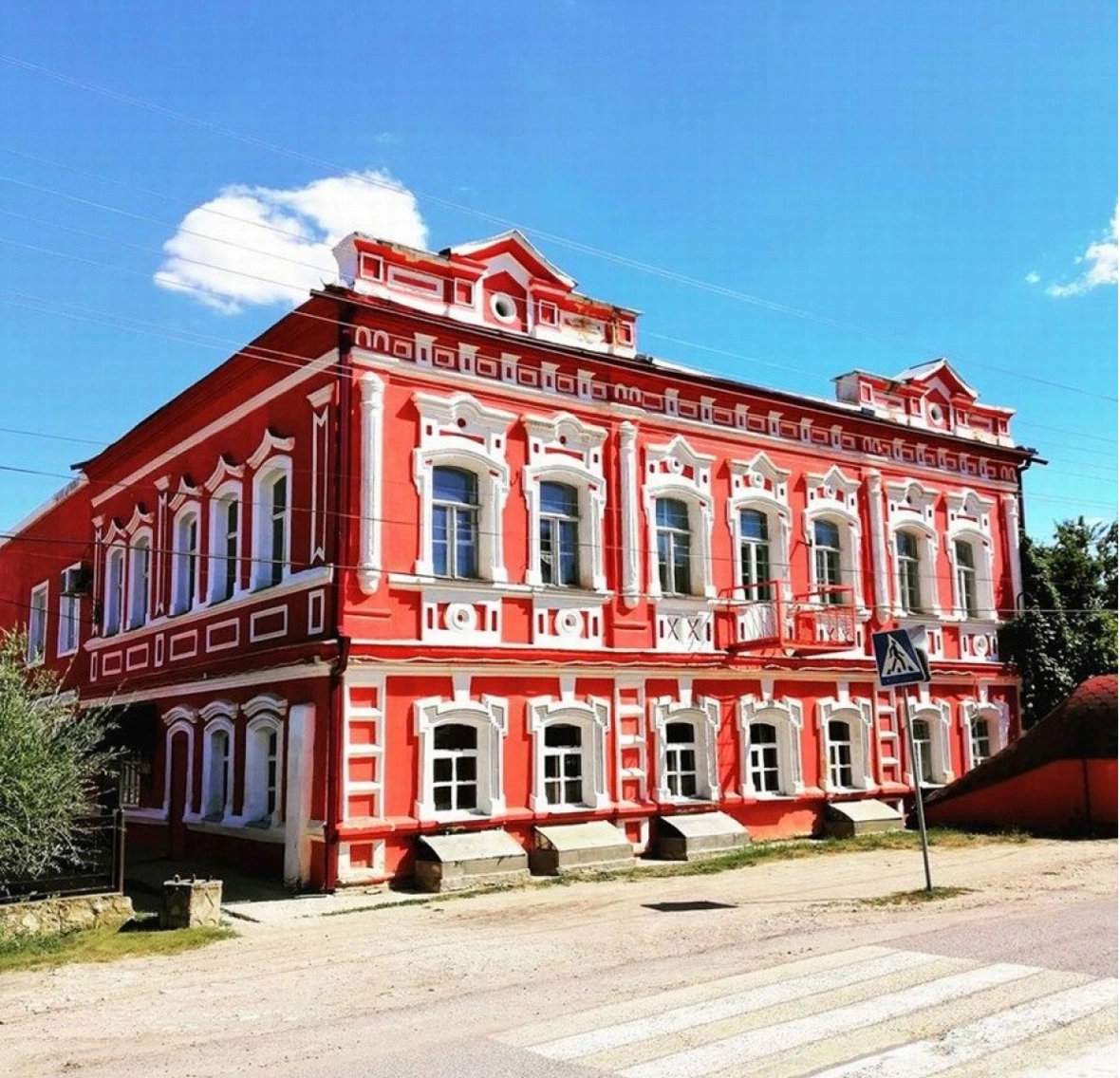
Cossack Culture Ethnographic Museum (Этнографический музей казачьей культуры) is a key cultural center in Volgograd for those interested in exploring the history, traditions, and lifestyle of the Cossack people. The Volga region has long been an important settlement for Russian Cossacks, whose culture has played a significant role in shaping the region’s development. The museum showcases various aspects of Cossack daily life, military traditions, handicrafts, and folklore. Exhibits include traditional Cossack clothing, weapons, handcrafted items, religious icons, and household objects, providing visitors with a comprehensive look into their way of life.
Beyond displaying historical artifacts, the museum offers visitors a hands-on experience of Cossack culture. Events held at the museum allow guests to listen to Cossack music, watch folk dances, and taste traditional cuisine. Additionally, horseback riding demonstrations and presentations on traditional Cossack warfare techniques make this museum even more engaging. The Cossack Culture Ethnographic Museum is a must-visit destination in Volgograd for history enthusiasts and those eager to experience the traditional Russian Cossack way of life firsthand.
Now Is the Perfect Time to Explore Volgograd!
With its rich history, iconic monuments, and stunning Volga River views, Volgograd is a treasure waiting to be discovered. By visiting the 19 must-see locations, you can immerse yourself in the city’s legendary past and captivating atmosphere. Whether you’re tracing historical footsteps or delving into cultural wonders, Volgograd promises unforgettable experiences for every traveler. Start planning your journey today and uncover the soul of this remarkable city! 🚀

